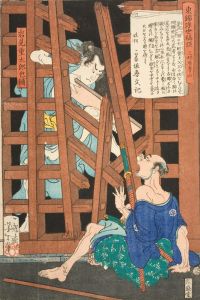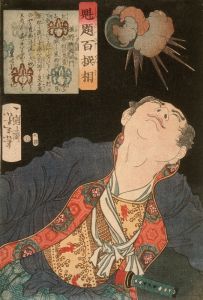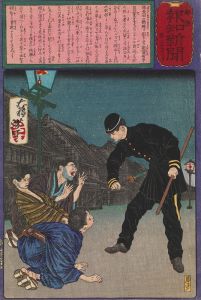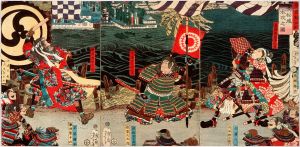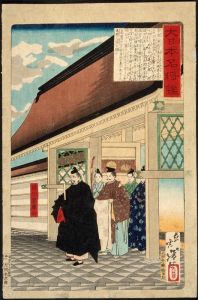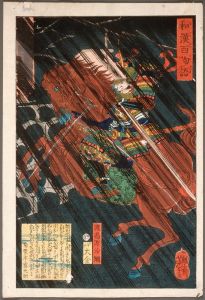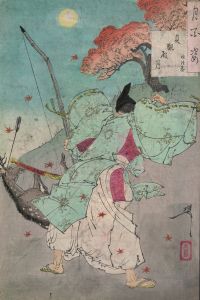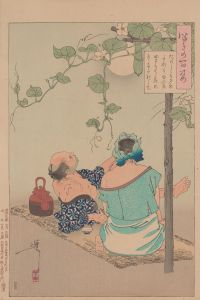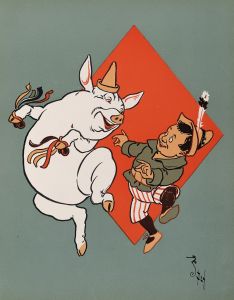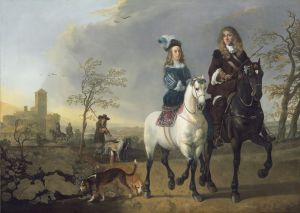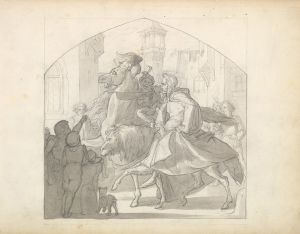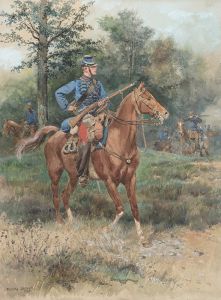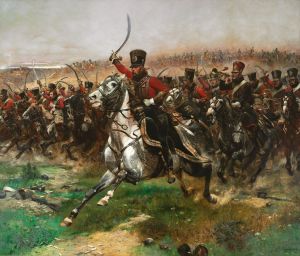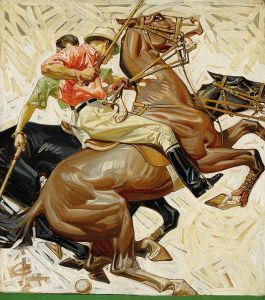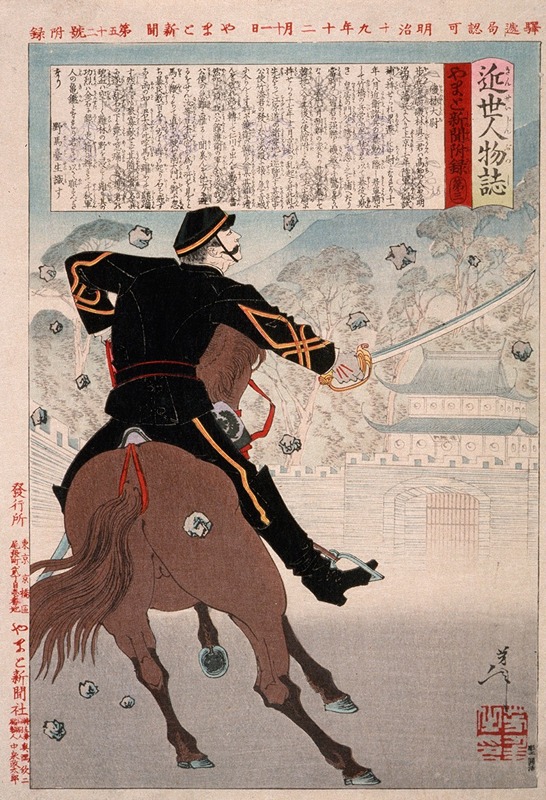
Isobayashi Taii on Horseback at Castle Gate with Falling Stones
A hand-painted replica of Tsukioka Yoshitoshi’s masterpiece Isobayashi Taii on Horseback at Castle Gate with Falling Stones, meticulously crafted by professional artists to capture the true essence of the original. Each piece is created with museum-quality canvas and rare mineral pigments, carefully painted by experienced artists with delicate brushstrokes and rich, layered colors to perfectly recreate the texture of the original artwork. Unlike machine-printed reproductions, this hand-painted version brings the painting to life, infused with the artist’s emotions and skill in every stroke. Whether for personal collection or home decoration, it instantly elevates the artistic atmosphere of any space.
"Isobayashi Taii on Horseback at Castle Gate with Falling Stones" is a woodblock print by the renowned Japanese artist Tsukioka Yoshitoshi. Yoshitoshi, a pivotal figure in the ukiyo-e art movement, is celebrated for his innovative approach to traditional Japanese woodblock printing, particularly during the late Edo and early Meiji periods. His works often depict historical scenes, folklore, and kabuki theater, characterized by dynamic compositions and vivid expressions.
This particular print is part of Yoshitoshi's series "Tsuki hyakushi" (One Hundred Aspects of the Moon), which he created between 1885 and 1892. The series is one of Yoshitoshi's most acclaimed, showcasing his mastery in capturing the interplay between light and shadow, as well as his deep interest in the cultural and historical narratives of Japan. Each print in the series is inspired by stories, legends, or historical events related to the moon, reflecting Yoshitoshi's fascination with the celestial body as a symbol of beauty, mystery, and inspiration.
"Isobayashi Taii on Horseback at Castle Gate with Falling Stones" illustrates a dramatic scene featuring Isobayashi Taii, a figure whose identity and historical background are not widely documented, suggesting that the character might be a fictional or lesser-known historical figure. The depiction shows Taii on horseback, navigating a perilous situation at a castle gate with stones falling around him. This imagery captures a moment of tension and action, a hallmark of Yoshitoshi's ability to convey movement and emotion through his art.
Yoshitoshi's use of color and line work in this print exemplifies his mature style, where he combines traditional ukiyo-e techniques with a modern sensibility. The composition is carefully balanced, with the dynamic pose of the horse and rider contrasting against the static architecture of the castle gate. The falling stones add a sense of immediacy and danger, drawing the viewer into the narrative.
The "Tsuki hyakushi" series, including this print, was produced during a time of significant change in Japan, as the country was transitioning from the Edo period to the Meiji era. This period was marked by rapid modernization and Western influence, which affected all aspects of Japanese society, including the arts. Yoshitoshi's work during this time reflects a blend of traditional Japanese themes with new artistic influences, making his prints a valuable cultural and historical record of the era.
Yoshitoshi's prints, including "Isobayashi Taii on Horseback at Castle Gate with Falling Stones," are highly regarded for their artistic quality and historical significance. They continue to be studied and appreciated for their contribution to the ukiyo-e genre and their reflection of the cultural shifts occurring in Japan during the late 19th century. His work remains influential, inspiring both contemporary artists and scholars interested in the intersection of art, history, and culture in Japan.





